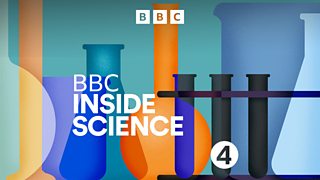Neutrons Probe Spider Silk Secrets - Concrete Canvas & Emergency Shelters
Quentin Cooper hears how neutrons in a state-of the-art particle accelerator are revealing the secrets of materials, from spider silk to Samurai swords.
Neutrons Probe Spider Silk Secrets
Just outside Oxford there鈥檚 a state-of the-art particle accelerator. It鈥檚 not searching for the secrets of the cosmos but probing materials in greater detail than is possible with any microscope. It鈥檚 the ISIS neutron source and has just had a major upgrade.
The intense beams of neutrons it sends out are being used by more than 2,000 scientists ranging from chemists to geologists. They can reveal the chemicals of life in molecular detail and the structure of materials used in electronics and nanotechnology. The newly completed upgrade will provide a second experimental hall, primarily for biological sciences. Quentin Cooper hears about the latest applications for the vast instrument.
For example, ISIS is being used to identify the molecular recipe for spider silk. Spider-silk is five times the strength of steel and more flexible than the material used in bullet proof vests. That鈥檚 leading to many potential new applications.
Far from catching flies, silk is forming the basis of bio-compatible materials for surgical sutures, bone, cartilage and tendon replacements and even guide tubes to regenerate damaged nerves. But the scientists at the Oxford Silk Group don鈥檛 want to start a spider farm!
They hope to reproduce in lab and ultimately factory what spiders do in nature. And for that they need to understand how the silk molecules behave, dry out and strengthen as the spider draws them from its spinarette. And that means looking at them with pulses of neutrons.
Neutrons are also helping aerospace companies tackle the challenge of cosmic radiation and its damaging effect on microchips in airplanes. They can identify materials that can store hydrogen safely, efficiently and cost-effectively for hydrogen cars of the future. And, looking to the past, the technology is helping scientists discover the true origins of historical artefacts. These have included ornate pistols owned by a former US President and Japanese swords that date back over a thousand years.
Concrete Canvas and Emergency Shelters
Engineers find solutions, and there鈥檚 no greater need for such ingenuity than in the wake of a disaster. Whether it be earthquakes or war, there are people around the world in desperate need of shelter and basic infrastructure.
Arup engineer Jo da Silva joins Quentin Cooper to talk about her work co-ordinating the building of shelters after the 2004 tsunami. She also discusses the key engineering problems in disaster zones, and how a mixture of materials and local expertise can ensure the re-building lasts in the long-term. A post-disaster solution suggested by Peter Brewin and his colleague is concrete canvas. This flexible cloth is impregnated with concrete powder and only needs water and oxygen to set hard.
It鈥檚 so tough that the MoD is already using it to strengthen defences on the frontline in Afghanistan. Although it鈥檚 currently too expensive to be suitable for shelters, the material has potential for making secure buildings and emergency field hospitals when and where they鈥檙e needed.


